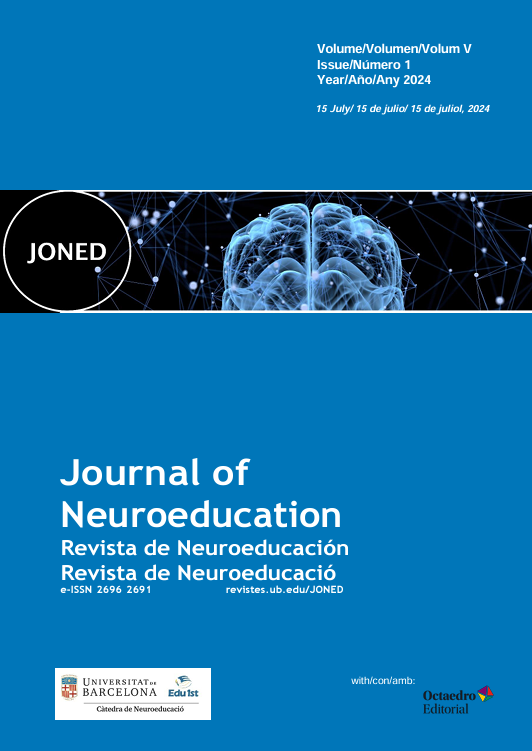Las funciones ejecutivas en el marco de la neuroeducación: una revisión de los factores que han demostrado mayor impacto en las propuestas de intervención en los contextos escolares.
DOI:
https://doi.org/10.1344/joned.v5i1.45531Keywords:
Brain, executive functions, Learning, intervention, neuroeducation, neuroeducator, programAbstract
The rise of neuroscience and its inclusion in school systems open an unprecedented path towards the transformation of the teaching role, which must lead educators to the deconstruction of their educational practices, the updating of their methodological proposals and the improvement of their didactics. A teacher who knows how the brain learns, the processes that are involved and the ideal way to stimulate it, makes teaching environments more efficient and meaningful, improves the learning of their students and forms individuals with greater emotional, social and human potential. In accordance with the above and validating the importance of these arguments, this article makes a thorough recognition and analysis of the interventions focused on executive functions developed in educational contexts from 2018 onwards, with the intention of identifying in a holistic and integrative way the different factors, actions and characteristics that make these stimulation programs successful proposals, in order to obtain guidelines, suggestions or criteria that allow readers and the writer to shape educational proposals based on neuroeducation and continue to demonstrate the need for their edifying insertion in current educational systems, which point towards a quality path, in which neuroeducation can be a great ally.
Downloads
Downloads
Published
Issue
Section
License
Copyright (c) 2024 Henry Giovanni Parrado Torres

This work is licensed under a Creative Commons Attribution-NonCommercial 4.0 International License.
The authors who publish in this journal agree to the following terms:
a. Authors retain copyright and grant the journal the right of first publication
b. Texts will be published under a Creative Commons Attribution Non Commercial License that allows others to share the work, provided they include an acknowledgement of the work’s authorship, its initial publication in this journal and the terms of the license, and not for commercial use.



